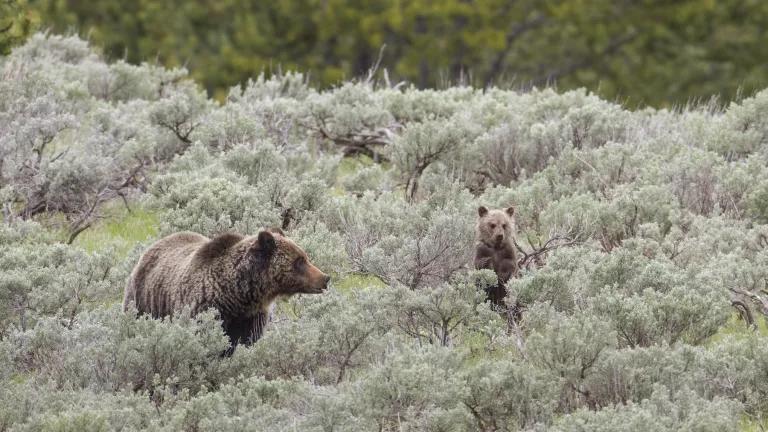Colorado’s Call of the Wild

The state used to be home to gray wolves. Can it ever get them back?
Whenever people ask me why I have such a passion for protecting wildlife and wild places, the answer is easy: Colorado. Growing up on the Front Range in the Mile High City, I had an everyday view of the Rocky Mountains. And I basically lived for weekend and holiday trips when I would get the opportunity to explore those mountains: hiking through forests, crossing streams, skipping stones in alpine lakes. Even today, if I close my eyes and go back there in my mind, I can hear the sound of pine needles crunching under my feet and smell the crisp, clean mountain air. Colorado is the reason that I fell in love with nature, and it’s the reason that I’ve made a career out of defending wildlife.
When I was growing up, I saw a world of possibilities in those mountains. I believed that every creature that should be out there was out there. I didn’t know at the time that gray wolves—which had called Colorado home for centuries—had, by 1945, been driven out of the state completely. To this day, they still haven’t made their way back.

In fact, wolves used to roam across most of the continental United States but by 1960 had been driven to near-extinction in the Lower 48. Thanks to the Endangered Species Act, wolves have managed to recolonize some key territory—including the Midwest states of Minnesota, Wisconsin, and Michigan, as well as the northern Rocky Mountains of Montana, Idaho, and Wyoming. Populations are gradually establishing themselves in the Pacific Northwest, and there are occasional sightings in California. There’s also a struggling population of Mexican wolves that has found a home in the American Southwest.
But my former home state still stands out as one of the last, best places for wolves—a place with just the right kind of habitat, not to mention vast areas of open space in which they can freely roam. Colorado is calling for them to come home.
For one thing, the state is still mostly wild. In fact, that’s what residents love about it. People who live in Colorado value the vast wilderness that it provides. They, too, live for those weekends and holidays when they can get out and explore the mountains. They love Colorado for the same reasons I do: It’s full of life, possibility, and even mystery. There are ghost towns in Colorado where a modern-day visitor can easily imagine the bustle of activity from a long-ago era of gold mining. Nineteenth-century miners were well acquainted with the sound of wolf howls coming down from the mountains.
Wolves were exterminated because they were viewed as a threat to the livelihoods of the early settlers. But times have changed. We now know that it is entirely possible to live harmoniously with predators. Wolves largely avoid people, and today there’s a new and growing movement among members of the ranching community to adopt practices that will prevent conflicts between wolves and livestock—making it possible for wolves, livestock, and people to coexist.
Wolves do occasionally make it to Colorado, almost always after traversing hundreds of miles in search of a new home. But so far, those that have made it there have died, either from being shot or hit by vehicles. And now comes news that it’s just gotten much, much harder for wolves to cross into Colorado from at least one neighboring state. A recent federal court ruling has given the go-ahead to the state of Wyoming to implement its highly contested wolf management plan—which will allow wolves to be shot on sight across most of the state.

I have a feeling that Coloradans would be far more accepting of the gray wolf than their neighbors to the north. And I’m proud to have recently joined a new coalition of groups calling on Coloradans to imagine the return of wolves to their state. The Rocky Mountain Wolf Project invites you to learn about the history of wolves in Colorado, including how they’ve disappeared. And it challenges you to envision their return to this wild state.
One day soon I’ll go back to Colorado, and I’ll take my kids with me. Together we’ll explore the mountains where I grew up. I have a favorite backpacking trip around the Maroon Bells that I dream of taking them on just as soon as they’re old enough to carry their own packs. I imagine hiking with them through the aspen stands, up and over the rocky scree, and back down through the alpine fields. And how I would love it if, as we lay down to sleep at night, we were treated to the sound of the one wild voice in Colorado that has gone missing: the howl of a wolf.




